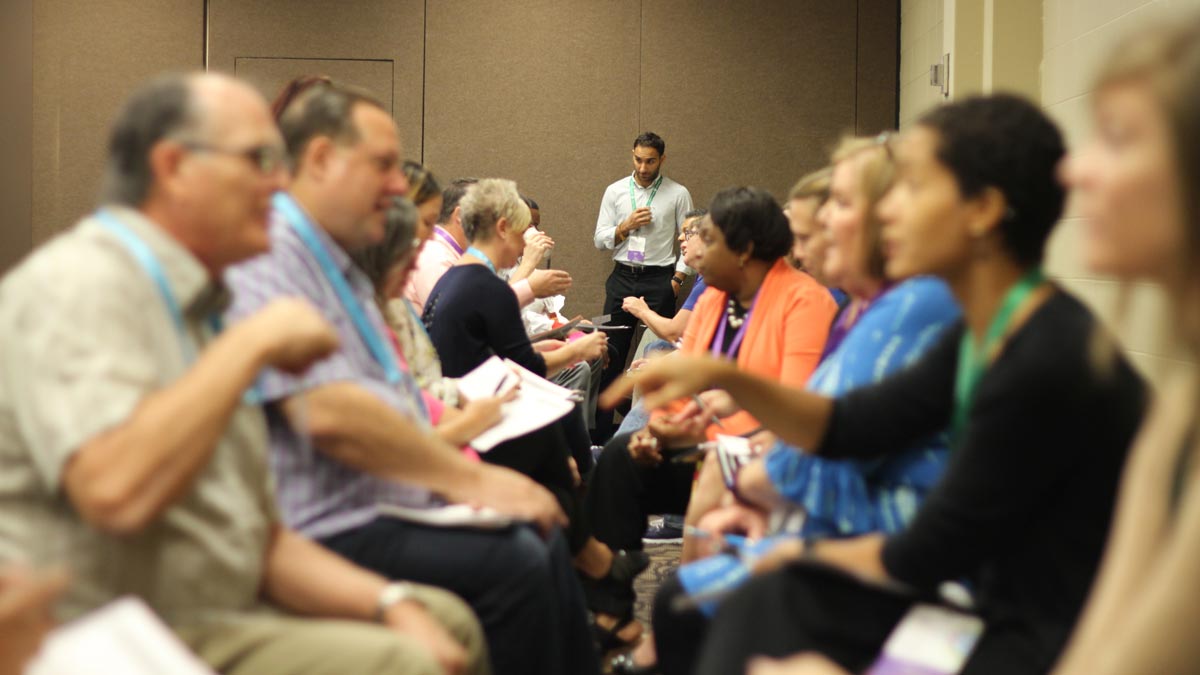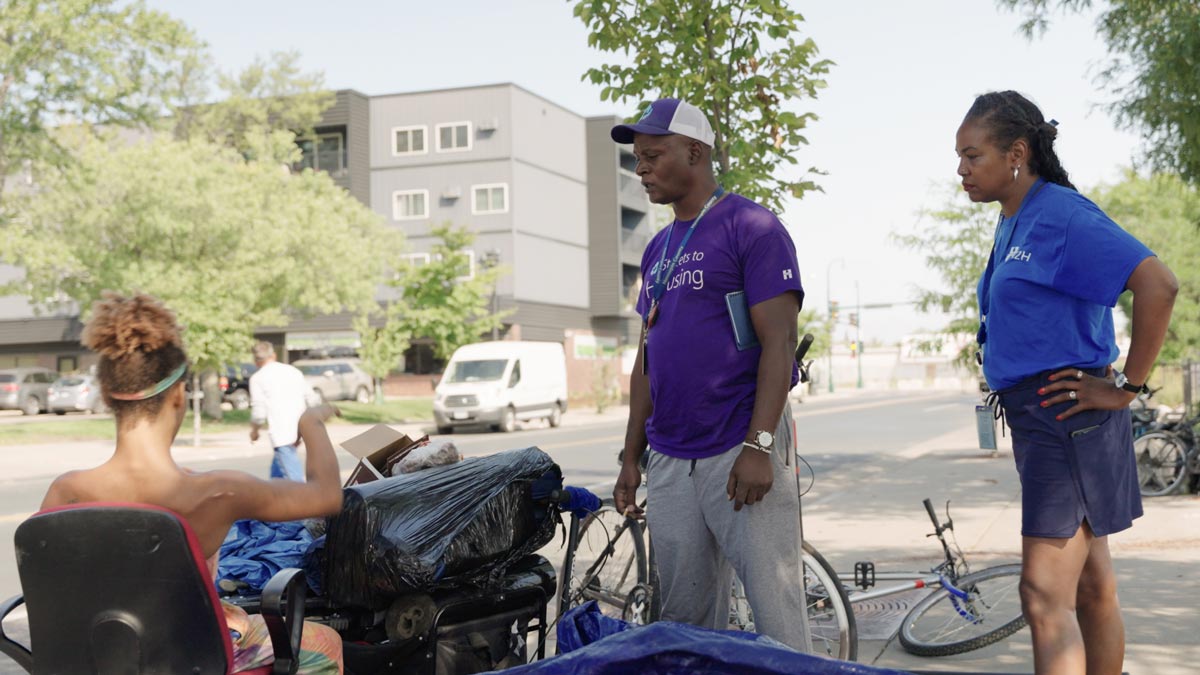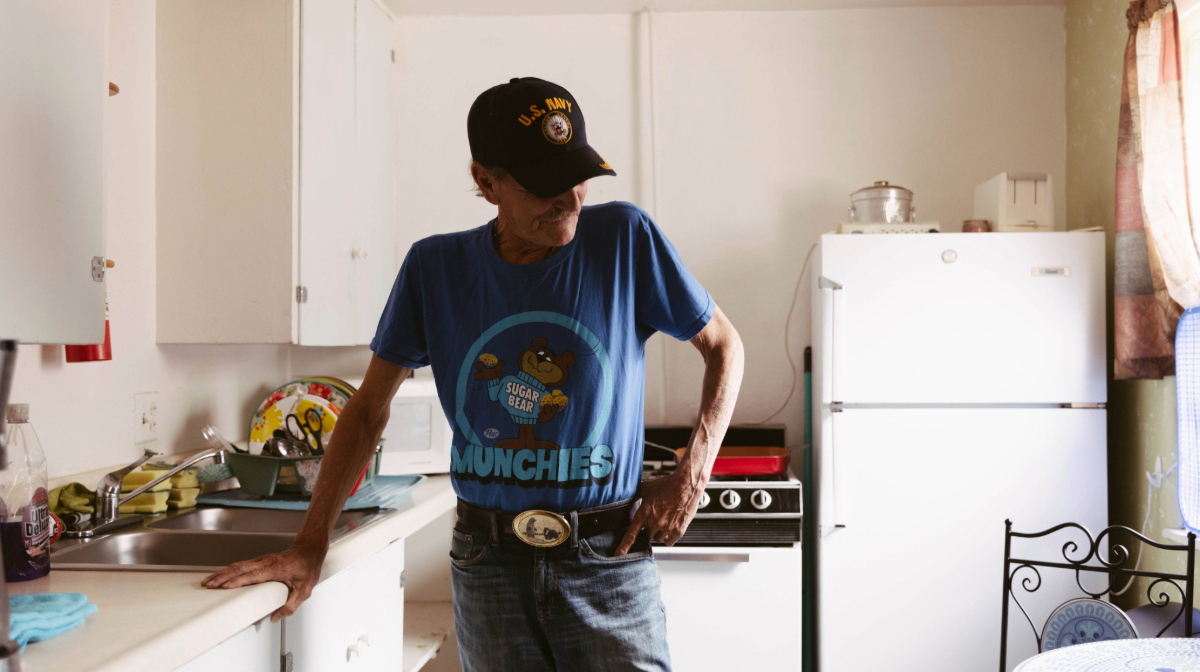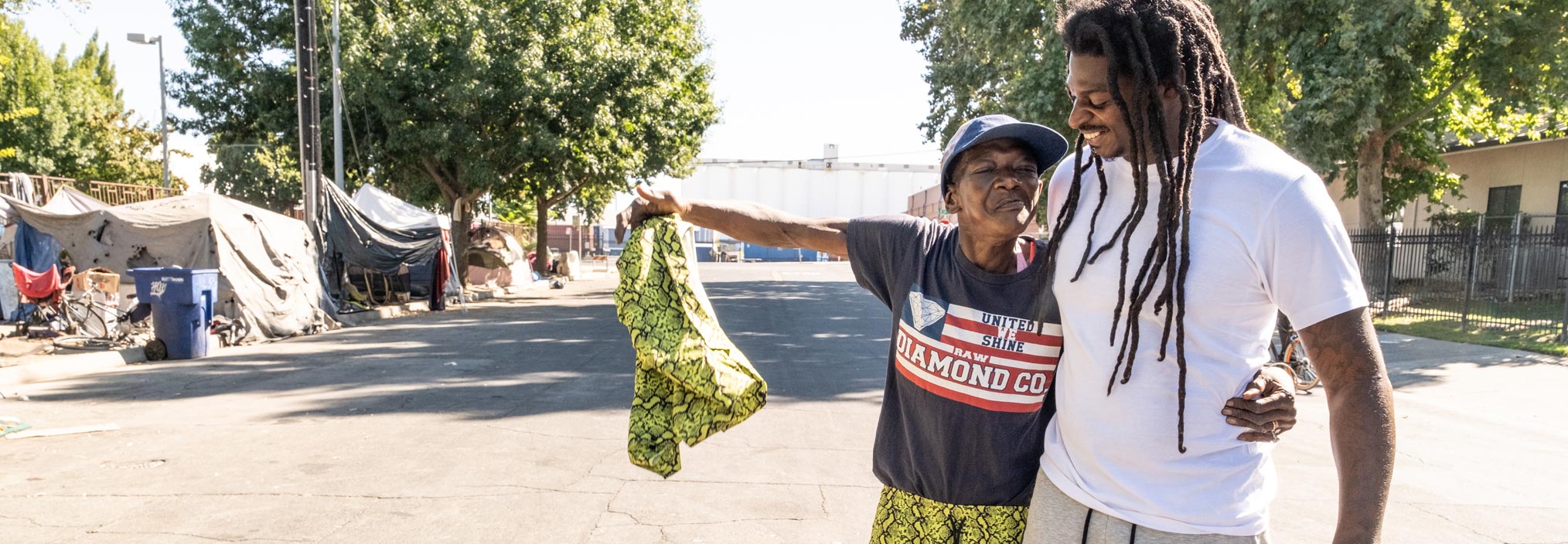Community Solutions works in collaboration with more than 100 cities to drive homelessness toward ‘functional zero.’
Patrick Martin’s life unraveled in a matter of months when the house he had rented for years in Eden, North Carolina, burned down. Two weeks later, a driver hit him head-on, sending Martin’s SUV barreling into a tree and placing him in the emergency room.
For six months, his only option for a place to sleep was inside the charred remains of one of his other cars. Then, a police pat-down landed him in jail for five months on a drug possession charge. Once out on probation, Martin stayed with a brother-in-law, then at a Veterans Affairs (VA) shelter in Charlotte, North Carolina, where he connected with someone who promised to find him a permanent home—and did so in a matter of weeks.
“It's like, I can finally breathe again honestly,” Martin said. “It's like, I can start the next phase of my life. I can live.”
“It's like, I can start the next phase of my life. I can live.”
Two years after becoming homeless, Martin, an Air Force veteran and former jewelry store manager, moved into an affordable housing complex in Charlotte, one of more than 140 communities that are part of a nationwide movement with an audacious goal: ending homelessness.
A Measurable and Equitable Movement
Built for Zero, a movement led by the nonprofit Community Solutions, is helping cities and counties make homelessness rare, brief, and nonrecurring—a concept called “functional zero.” Since launching in 2015, Built for Zero has helped 15 communities, including Rockford, Illinois; Bergen County, New Jersey; Norman, Oklahoma; and Bakersfield, California, reach the milestone for at least one target population, such as veterans, people experiencing chronic homelessness, or families.
It works because communities align the efforts of dozens or sometimes hundreds of agencies, local government units, and service providers that each handle a small piece of the challenge. A strategy that Community Solutions refined over the years, Built for Zero takes a command center approach similar to communities’ collective responses after natural disasters.

At a recent Community Solutions learning session, stakeholders work on establishing a collaborative approach to addressing homelessness. Credit: Community Solutions
“The very disruptive idea was to move beyond just working individually program by program to help people experiencing homelessness to addressing how the whole community aggregates its efforts,” said Community Solutions President and CEO Rosanne Haggerty, a MacArthur Fellow and housing and community development leader.
Data collection, including real-time information on every person experiencing homelessness in a community, is a priority in Built for Zero’s approach. The data, composed of an individual’s name, health status, history of homelessness, housing needs, and more, allows communities to better target resources, hold themselves accountable, and track progress. Knowing people’s names makes the effort personal.
Changing the Mindset
Haggerty said she and others who have worked for years to address homelessness have always known that the challenge was solvable. After all, the number of people experiencing homelessness amounts to barely 1 percent of any given community’s population, according to Community Solutions.
“The biggest barrier between where we are as a country and where we can be on this issue is disbelief,” Haggerty said. “I think folks have really sort of accepted picturing this issue as too big to solve or that the problem is individuals who want to be homeless.”
The success of Built for Zero communities, including large cities such as Denver and Atlanta, which have achieved significant reductions, is changing that mindset.
The success of Built for Zero communities, including large cities such as Denver and Atlanta, which have achieved significant reductions, is changing that mindset.
Rockford, Illinois, was the first Built for Zero city to hit functional zero. It reached that goal in 2015 for its veteran population who had experienced homelessness, followed in 2017 for people who had experienced chronic homelessness.
Getting there was tough, said Angie Walker, Rockford’s homeless program manager, who first stumbled upon the Built for Zero campaign in an online search for solutions to homelessness. Stakeholders were slow to drop their skepticism and collaborate.
“At some point it clicked, and we started rolling, and we never really stopped,” Walker said.

A Community Solutions systems navigator and social worker collaboratively work to address homelessness in Hennepin County, Minnesota. Credit: Community Solutions
Still, hitting functional zero was a bit of a shock. Walker’s counterpart at the local VA said she was not finding people experiencing homelessness on regular outreach trips around town. “She said, ‘Angie, I go out looking for people now, and I can't find them,’” Walker recalled. “She was like, ‘I think we housed them all!’”
Now the city is reaping other benefits, including saving money on police and EMTs who previously responded to calls involving people experiencing homelessness.
$135 Million Affordable Housing Fund
Success in Rockford and larger cities, including a 30 percent reduction in veteran homelessness in Denver, highlighted another challenge: the lack of affordable housing.
Community Solutions responded in 2022 with its Large Cities Housing Fund. They used $10 million of the $100 million grant Community Solutions received from the 100&Change competition a year earlier. 100&Change funds a single proposal that promises measurable progress in solving a critical contemporary problem.
[The Fund] used $10 million of the $100 million grant Community Solutions received from the 100&Change competition a year earlier.
Today, Large Cities Housing Fund is comprised of $135 million in social impact capital used to acquire existing properties and preserve them as affordable housing for veterans transitioning out of homelessness. It is much faster than developing entire, new properties from scratch.
The fund has attracted the country’s largest social impact investors, including health systems, banks, and private foundations. Among them is Kaiser Permanente, which contributed $50 million to get the fund up and running.
Best known for its healthcare and insurance, Kaiser, like other fund investors, has a broader interest in solving homelessness.
“There are so many other factors that affect health, such as food insecurity, housing insecurity, economic opportunity, climate change, sustainability,” said John Vu, vice president for Community Health at Kaiser.
Large Cities Fund has acquired nearly 1,400 apartment homes in seven cities, including Martin’s home in Charlotte. More than 186,000 people like him have been housed by Built for Zero.

William, a veteran who experienced homelessness, in his new home in Fremont County, Colorado. Fremont County is one of 15 Built for Zero communities that has reached functional zero. Credit: Community Solutions
Martin’s life continues its upward trajectory. Thanks to a determined property manager, he was able to get into his apartment despite his brush with the law, which typically disqualifies people from affordable housing—an obstacle for many veterans with mental health and substance use disorders, Martin said.
Unable to work because of disabilities and mental health conditions, he sticks to a routine of gym workouts and VA appointments. Martin also is trying to build relationships with his adult children who grew up apart from him. A sister gave Martin a boxing glove to remind him that he is a fighter.
Outside his new apartment, the beauty of the trees and a pond eases his mind, and he finds some fulfillment in offering simple acts of kindness to strangers. Best of all, after years of what he described as existing but not truly living, Martin can contemplate hope for the future.
“It's been a very hard road. Now I'm hoping I can get some happiness.”
“To find a partner and just live my best life,” he said, reviewing his list of goals. “To travel, be able to see my kids more. It's been a very hard road. Now I'm hoping I can get some happiness.”
Martin’s story is one of thousands where an innovative model to address homelessness—a strategy based on community collaboration—has been effective. Hundreds of thousands more people experiencing homelessness can reach their aspirations if they can secure something as basic as stable housing.
The 2021 awardee of a $100 million grant in MacArthur's 100&Change competition, Community Solutions is using the funding to implement and scale Built for Zero, its data-driven public health approach to accomplish the goal of ending homelessness in 75 U.S. communities in five years.





